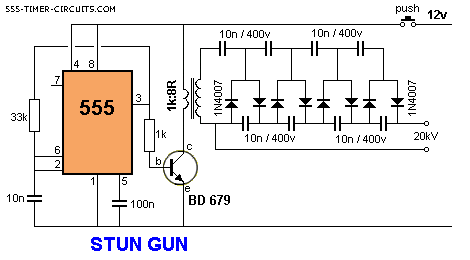Fiddy
0
- Joined
- May 22, 2011
- Messages
- 2,736
- Points
- 63
G'day,
Got the parts for this the other day!
For all of use who do not know, a Marx Generator works by charging capacitors in parallel then discharging in series, when you discharge in series you will add the voltages of the capacitors up.
This is done by the spark gap between each capacitor.
here's a diagram:

How i put i all together:
12V Battery -> HV Generator -> Marx Generator -> Output!
They are quite simple to build, if you've got a HV supply already its even easier.

I used 7x 10kV 4.7nF Capacitors & 13x 1 M ohm capacitors, this one was just a test, i have 20x capacitors and 200x resistors waiting
Im currently using the per-assembled one that runs off 12VDC: MXA028: HIGH VOLTAGE DC GENERATOR BOARD 9-15 VDC PROJECT ASSEMBLED KIT | eBay
Thanks for looking!
Fiddy.
Got the parts for this the other day!
For all of use who do not know, a Marx Generator works by charging capacitors in parallel then discharging in series, when you discharge in series you will add the voltages of the capacitors up.
This is done by the spark gap between each capacitor.
here's a diagram:

How i put i all together:
12V Battery -> HV Generator -> Marx Generator -> Output!
They are quite simple to build, if you've got a HV supply already its even easier.

I used 7x 10kV 4.7nF Capacitors & 13x 1 M ohm capacitors, this one was just a test, i have 20x capacitors and 200x resistors waiting
Im currently using the per-assembled one that runs off 12VDC: MXA028: HIGH VOLTAGE DC GENERATOR BOARD 9-15 VDC PROJECT ASSEMBLED KIT | eBay
Thanks for looking!
Fiddy.
Last edited:




